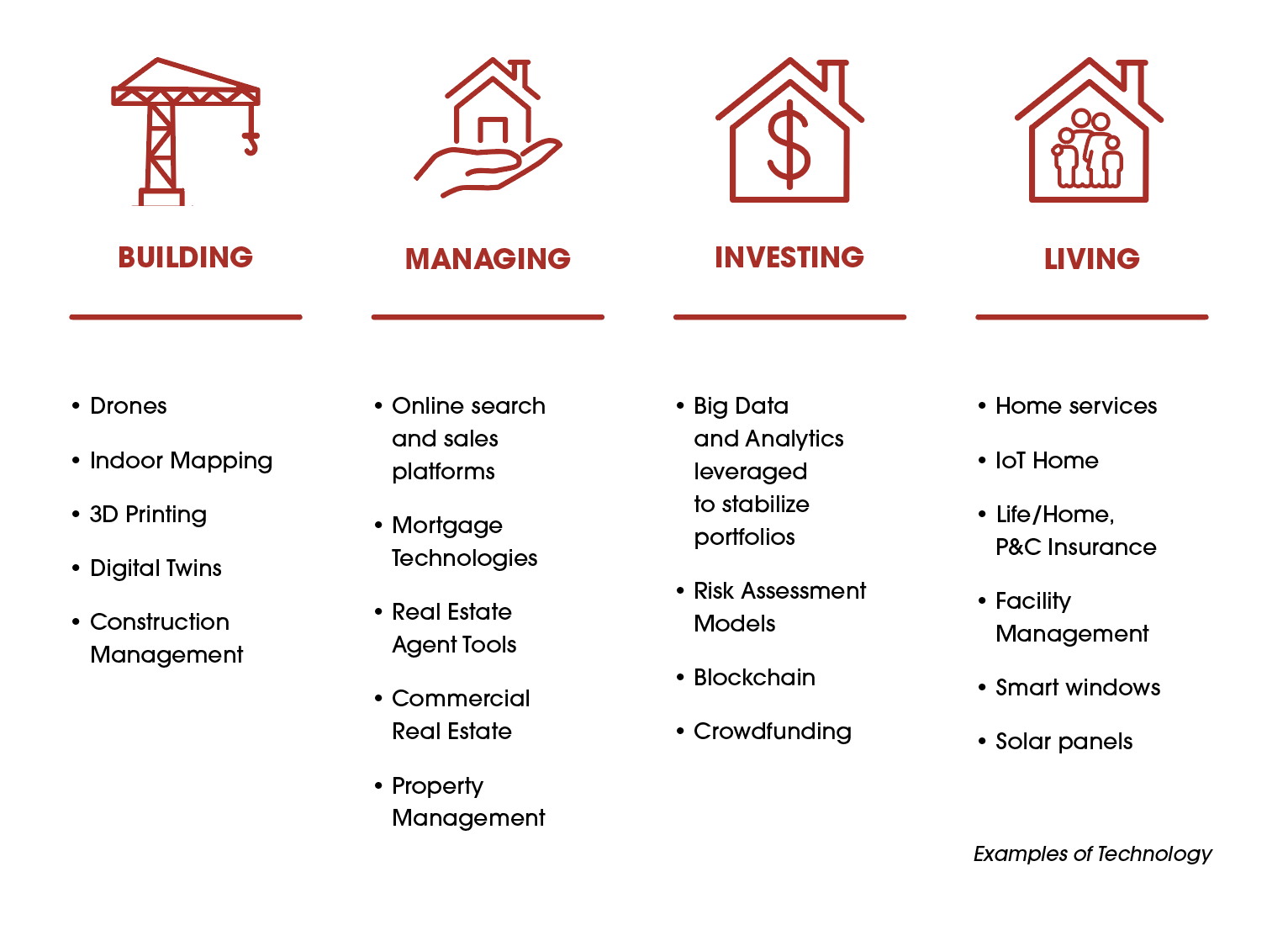In the Building category, PropTech innovates by introducing usage of drones, indoor mapping, surveying, permit management, personnel management software tailored to the construction industry, providing digital twins, innovating with new materials, such as bio-concrete, and so much more. The Managing category tends to be the biggest player year after year, with many companies and a massive amount of investment involved in establishing everything from online search, sale and rental platforms, to mortgage technologies, to short-term stay platforms, real estate agent tools – such as market intelligence dashboards, and other forms of property management. The investing category is where we see the market being transformed by the ability of new companies to transform the field of portfolio management and Big Data analytics through the usage of AI and machine learning enabled platforms. Finally, in the Living category, we find the introduction of IoT homes, insurance, facility management, and climate control systems to be standards of the market. We have discussed these categories further in the past PropTech Barometers (including, especially, in the 2022 edition).


